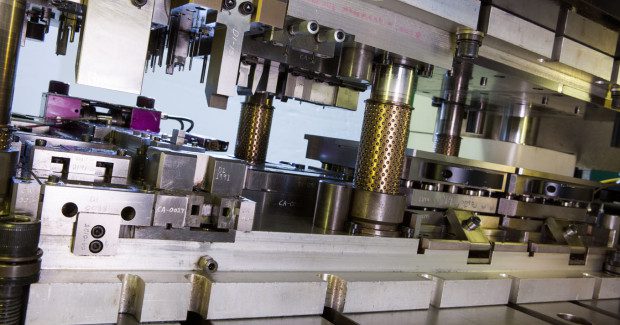The Brave New World of Obamacare
In the midst of a U.S. manufacturing renaissance, the disastrous rollout of Obamacare could put a crimp on manufacturers – particularly small shops. Of the nearly 11,000 pages (and counting) of new regulations imposed by this new law, no one really understands the full impact that lies ahead, what new regulations will be added, or how other arcane portions of the law will be changed in the future. Here is a general review of what we do know so far.
Posted: January 27, 2014
It’s here. The largest change in employer-provided health benefits in the post–World War II era has arrived. With its highly publicized erratic start, the pace and timing of U.S. health care reform has become extremely difficult to predict. As of this writing, many of the law’s relevant provisions still take effect this year, driving many employers to make dramatic changes as they become more aware of the new economic and social incentives embedded in the law and of options to restructure benefits beyond dropping or keeping them.
SMALL BUSINESS, LARGE TAX
ObamaCare includes so many taxes that it’s hard to keep track, but one of the worst opened the New Year on January 1: a levy on health insurance premiums that targets small business and individual markets. According to the Wall Street Journal (“A Large New Tax on Small Business,” December 29, 2013), at $8 billion in 2014 and $101 billion over the next decade, this insurance tax is “larger than the new law’s other taxes on medical devices and prescription drugs combined. The Internal Revenue Service classifies this tax as a “fee”, but it functions like an excise tax on premiums. The IRS collects an annual flat amount specified by Obamacare to be allocated among the insurers according to market share.”
But not all markets. The WSJ report explains that “IRS regulations published in November excluded “any entity that is a self-insured employer to the extent that such employer self-insures its employees’ health risks.” Since about four of five employers with more than 500 workers and most union-negotiated health plans are self-insured, they are spared from the tax. So is insurance on behalf of “government entities,” such as original Medicare (but not privately run Medicare Advantage).”
In other words, many large manufacturers and labor plans are exempt, meaning the tax burden falls on small shops, the self-employed and individuals. This “fee” is not deductible for corporate income tax purposes, so health plans pay not only this tax, but also any federal and state taxes on the taxed amount. The WSJ report estimates that “this unusual taxes-on-taxes rule means that the effect on premiums is 54 percent larger than the dollar amount of the tax itself.”
JUST THE FACTS, MA’AM
No shop is required to provide insurance. But starting in 2015 – a one-year delay from the previous date of 2014 – small manufacturers with 50 or more employees that don’t provide health care coverage and have at least one full-time worker who receives subsidized coverage in the health insurance exchange will have to pay a fee of $2,000 per full-time employee. The shop’s first 30 workers are excluded from the fee. Manufacturers with fewer than 50 people won’t face any penalties. So who exactly classifies as a full-time employee?
Brent Terhaar, a manufacturing and distribution partner, and Anita Baker, an employee benefit plans managing partner at CliftonLarsonAllen Wealth Advisors, LLC (Minneapolis, MN), explain that “a full-time employee (FTE) is defined as someone who works an average of 30 or more hours of service per week or 130 or more hours of service a month. Companies will need to total employee hours worked in a month and divide by 120 to determine whether someone is an FTE.”
The health law offers a tax credit to help cover the cost for owners of a small shop. Employers with fewer than 25 full-time workers who earn an average yearly salary of $50,000 or less can get tax credits of up to 50 percent this year. Due to technical difficulties, in late November the Obama administration also announced a one-year delay in the debut of the online marketplace for small manufacturers, called the Small Business Health Option, or SHOP. Until the SHOP exchange is fully operational in November 2014, small business owners can apply for coverage through the mail, over the phone or with a broker or insurance agent.
The eventual goal is for health insurance exchanges to allow millions of individuals and small employers to access and compare insurance plans. These exchanges are central to determining whether individuals are eligible for Medicaid or premium tax credits to assist in purchasing health insurance coverage. This brings us back to that $2,000 FTE “fee” – when everything is established (as currently written), Terhaar and Baker point out that an employer will be subject to a “no coverage penalty (pay or play)” of $2,000 per full-time employee (excluding those first 30 full-time employees) if three conditions are met:
- A shop does not offer full-time employees the opportunity to enroll in minimum essential coverage under an eligible employer-sponsored plan, or
- At least one full-time employee enrolls in a health plan via a state or federally-established health insurance exchange, or
- The full-time employee receives government subsidies to pay the premiums for the health insurance exchange coverage.
That’s not all. There is also an unaffordable coverage penalty that applies if an employer offers full-time employees the opportunity to enroll in minimum essential coverage under an eligible employer-sponsored plan that is either unaffordable or does not provide at least 60 percent minimum value, which means at least 60 percent of the healthcare costs are covered by the plan,” notes Terhaar and Baker. “Using the Internal Revenue Service safe harbor method, a plan is unaffordable if the full-time employee’s premium payments for self-only insurance coverage are more than 9.5 percent of W-2 income.”
There’s more. “If at least one full-time employee enrolls in an exchange and is certified to receive a government subsidy, the manufacturer is subject to a penalty of $3,000 for each full-time employee who enrolls in the exchange and receives a subsidy,” states Terhaar and Baker. “The government subsidies are available for individuals whose household income is between 100 percent and 400 percent of the federal poverty level — currently $92,200 for a family of four. Full-time employees whose household income is below 133 percent of the poverty level will be covered by Medicaid, unless the state opts out of this provision of the new law.”
BAD MEDICINE
These are just some of the Obamacare taxes and fees that insurers are warning customers they’re passing on to them. In its report “Sticker Shock! 2014 Obamacare Taxes,” (December 31, 2013), World Net Daily reports that “there are more than 20 new or higher hidden taxes that will cost more than $675 billion over the next decade, such as the medical equipment levy that will make heart valves, stents, pacemakers and other medical devices more expensive.”







